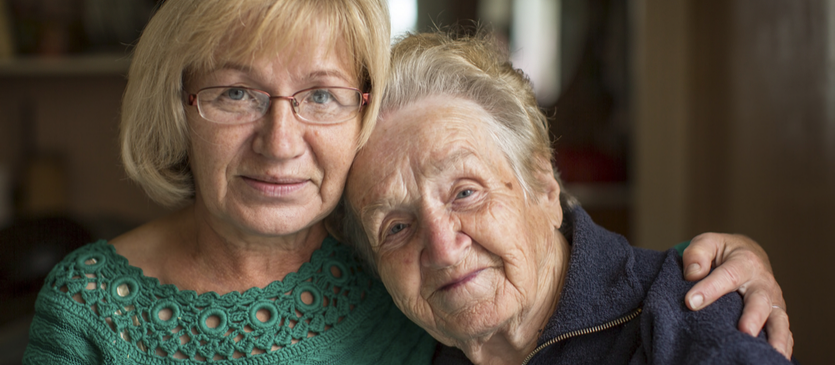After a series of small strokes and serious falls, Margaret’s family realised the five-hour distance between her and most of her family was no longer practical or safe.
A move to Sydney where all four of her children lived was the natural solution, but it meant uprooting her life and re-establishing her five hours away, where she only knew a few people. Margaret had lived in a small town on the mid-north coast of NSW all her life and had lived alone since the death of her husband 15 years earlier. She was strongly connected to her community and everyone knew her; she had worked in the local butcher’s shop and taught Sunday school for decades. Her parents, brothers, sisters, aunts, uncles and cousins had all lived the same small town, all but one remaining brother were buried there.
It was all she knew, and the decision to leave was hard. However, now her health and safety at home were a major concern, living close to her four adult children and 13 grandchildren just made more practical sense. On the positive side, it meant she could see them most days and every weekend instead of once or twice a year during school holidays.
Margaret’s experience is not uncommon. For a range of reasons, many people live a long distance from their children. This distance becomes a major issue when their health begins to decline, and family members can’t get to them quickly in a crisis.
Moving a parent takes time and consultation
It might seem a simple task of packing and arranging removalists, but moving an elderly parent is usually a complex and more involved process. There’s the sorting, packing, selling antiques and furniture, preparing the property for sale (if necessary) and finding a suitable new home or living arrangement.
Finding a new home should be a joint project, and your parent should be the key decision-maker. After all, if they’re not involved in deciding where to live, this will impact how well they adapt to the change and settle into their new home and community.
Margaret agreed to the move on the condition she could stay close to the beach with bushland nearby. She needed to find a new home with a strong community-feel, a church, local social groups and opportunities to do the things she loved – knitting, embroidery and playing bridge. She found an independent living complex where she could access in-home care to monitor her health when the family couldn’t be there and prevent more falls. The unit had plenty of safety features to reduce the risk of more falls.
Saying Goodbye
A great idea is to have a farewell event or activity before your parent moves – so they can say goodbye to special people and close the chapter in their lives with dignity. Waiting until a crisis brings a sense of urgency and often means a hasty, traumatic move.
Encourage new connections through shared interests
Clubs, community groups and senior’s activities can be a great way to meet new people. The local council often hosts events and programs for seniors, such as art classes, exercise classes and bridge.
Margaret’s children and grandchildren showed her around and took her to the shops, local cinema, library and their favourite cafes. At first, she felt like a tourist, but soon it became more like home. She joined the mailing lists of the cinema, local bowling club, garden society and knitter’s guild so she could get newsletters and find out what was on.
The Randwick City Council has a full list of senior services and activities Margaret could join: https://www.randwick.nsw.gov.au/community/seniors-access-and-disability/seniors-programs-and-projects
Margaret was fortunate to be an outgoing person who made friends and networks quickly. She found her new neighbour at the complex shared many interests and hobbies. There were opportunities to join in activities organised at the complex as well as in the larger community.
Creating a positive moving experience should not be left to chance. Families can prepare and facilitate a smooth transition for their elderly loved ones by focusing on the social and emotional parts of the journey, instead of just the practical, logistical aspects of downsizing and moving to a new area.




